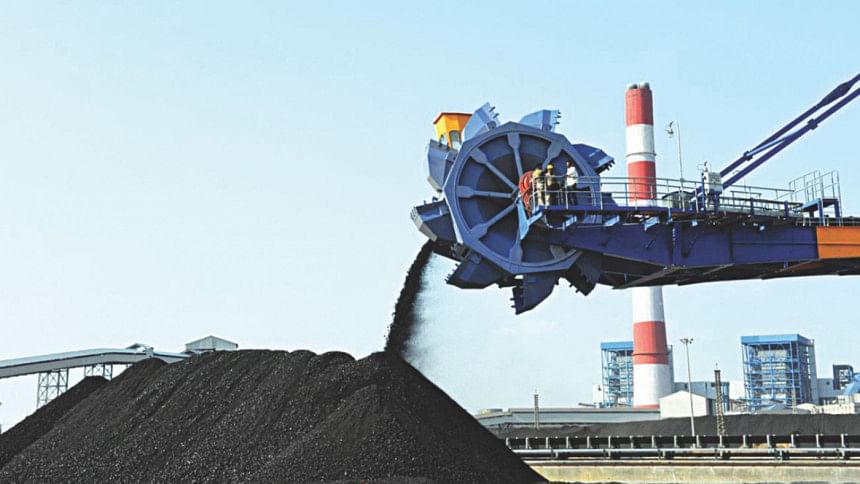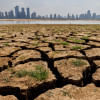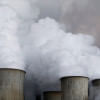Can coal be used for cheap energy without harming the environment?

Climate change will hit Bangladesh, and rising temperature and sea level will affect millions in both the short- and long-term. However, it has also embarked on a path to accelerate growth and achieve middle-income status in the immediate future. As a consequence, our energy need, particularly consumption of electricity, is increasing. With demand for electricity growing by 10 percent a year, it needs to more than double production, to over 30,000 megawatts by 2030. How can we achieve the dual objectives, to achieve sustainable growth and combine it with its commitment to reduce carbon emissions or Nationally Determined Contributions (NDCs)?
Apparently, Bangladesh appears to be caught in a bind, with limited options to ramp up electricity generation. The Power Division of our government aims to generate 19,000 megawatts of coal-powered energy by 2030 to provide energy for all at a low cost. Energy experts, at home and abroad recognise that renewables, in the form of solar and wind, will still represent a small fraction of overall energy generation.
We can take comfort from the fact that we are not the only country that is caught between a rock and a hard place. The International Energy Agency (IEA) forecasts coal use in electricity generation to grow 33 percent by 2040. Demand for coal in Southeast Asia alone is expected to increase 4.8 percent a year through to 2035. Meeting increasing electricity demand requires a huge expansion in the region's power system, with coal and renewables accounting for almost 70 percent of new capacity. As one expert put it, "The link between access to affordable power from coal, economic growth and prosperity is clear."
How do we then move towards a point where (until we reach middle-income status and 100 percent of our population is connected to the grid) we can take advantage of cheap sources of energy, i.e. coal and natural gas, and minimise the impact on the environment? Since SDG 13 stipulates action to combat climate change and its impacts, while SDG 7 urges the global community to ensure access to affordable, reliable, sustainable and modern energy for all, the challenge for policymakers is to find a balance between "affordable energy" and "climate impact".
As a low-income country, Bangladesh has to chart its own path to sustainable and low-cost energy. To ensure that burning coal does not cause collateral damage on health, air, land and water, power plants must be efficient and leave only a modest "carbon footprint". With a few additional major coal-powered generating plants going up in the coming years, we must not only pay attention to the health and environmental impact of burning coal, including air pollution, water pollution and solid wastes, but also from heavy metals such as arsenic, cadmium, chromium, lead, and mercury.
Fortunately, research and technology on clean energy have opened up new possibilities. However, the international community must step up and play its part to enable developing countries to implement available technology to transform the low-cost sources of energy into clean energy to fuel their economic development. After the World Bank ceased lending for coal-fired power stations in 2010, it has been slow in terms of financing clean technology. IEA has raised concerns about international investors moving away from coal and the risk that this presents: "If development banks withhold financing for coal-fired power plants, countries that build new capacity will be less inclined to select the most efficient designs because they are more expensive, consequently raising CO2 emissions."
Bangladesh along with its South Asian neighbours have set an ambitious goal to electrify their countries by 2030. The Philippines, Thailand, Cambodia, Laos, and Myanmar, Vietnam, and Indonesia plan 100 percent electricity access, and all except Myanmar and Cambodia are set to reach that target by 2020. Their governments see providing power for these people as an overriding short-term priority and are leveraging coal to generate electricity.
Transfer of technology in the area of power generation, treatment of waste and carbon disposal, and renewable energy ought to be set as priorities in international discussions whether in climate change committees, SDG financing forums, or multilateral development aid. Given these very real energy needs, we must tap all sources of energy and all low emission technologies available to us. This includes ultra-supercritical coal plants, high efficiency, low emission coal (HELE), and carbon capture and storage (CCS) technologies.
The Trump administration is also advocating the creation of a global fossil fuel alliance that would include countries "willing to make fossil fuels cleaner rather than abandoning them." US Energy Secretary Rick Perry often refers to this approach as "new energy realism" in global power development, noting that fossil fuels are absolutely essential for developing countries, especially in those where many people still have no electricity.
Speaking at the Indo-Pacific Business Forum last month, Rick Perry stated the US would be exporting High Efficiency Low Emission (HELE) coal technology to India and other developing markets to help them achieve energy security. The Japan-United States Strategic Energy Partnership's priorities for 2017 and 2018 includes deploying highly efficient, low emissions coal technology, as well as energy infrastructure, in South Asia and Sub-Saharan Africa, as an essential component of the "global fossil fuel alliance" of US efforts to help electrify developing countries.
Perry also discussed advances in the field of carbon capture and storage (CCS), a process which traps carbon dioxide during the coal-burning process and buries it underground. CCS prevents around 90 percent of CO2 emissions from entering the atmosphere. Many scientists suggest CCS technologies will be indispensable to meeting the Paris Accord emissions reductions targets. China currently has eight major CCS projects in development, while Japan's Tomakomai CCS Demonstration Project is achieving promising results in capturing CO2.
Bangladesh's energy infrastructure can also benefit from technology transfer from China, which has recently made great strides in the renewable energy aspect of the equation. According to the IEA, three nations will account for approximately two-thirds of global renewable energy expansion through 2022, China, India, and the US. China is also now considering a plan to increase its purchasing of American coal as part of its most recent pledge to make significant efforts to narrow its trade deficit with the US. If China, Japan, and the US can spread these and other innovations across Asia to burn coal more efficiently, they could help the region significantly reduce its carbon footprint.
Dr Abdullah Shibli is an economist, and Senior Research Fellow, International Sustainable Development Institute (ISDI), a think-tank in Boston, USA. His new book Economic Crosscurrents will be published later this year.










Comments